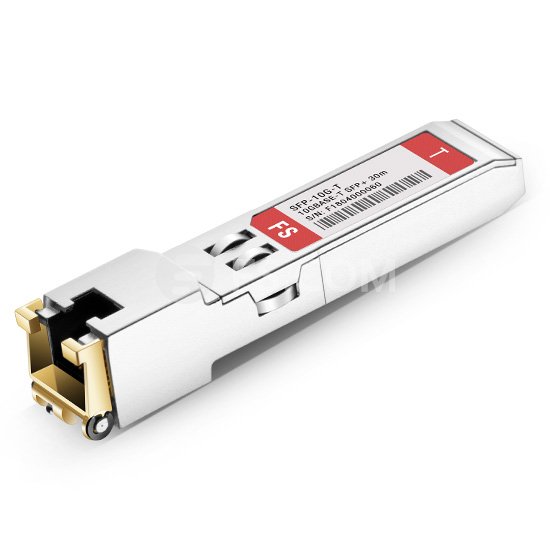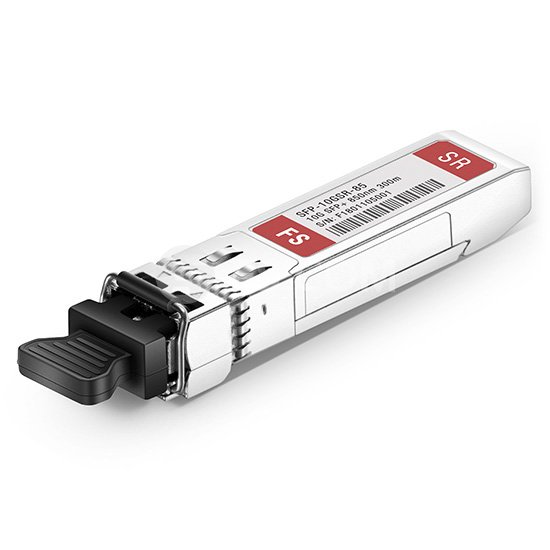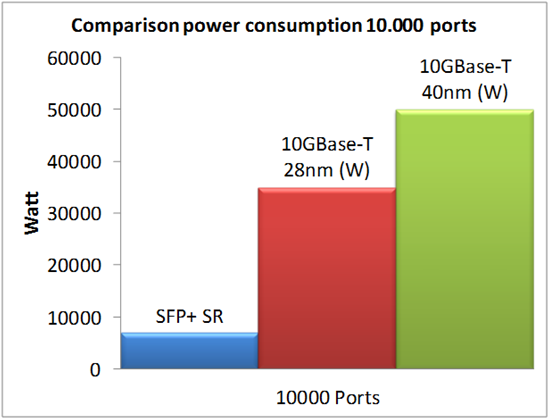With the growing need of higher capacity network connectivity, 10G network transmission is becoming increasingly popular. 10G SFP+ optical transceiver and 10GBASE-T copper transceiver are the two main options of 10G network. It becomes a challenge to choose the appropriate 10G connectivity for every IT worker. This article will compare 10GBASE-T with 10G SFP+ transceiver from the perspectives of power, latency, cost and interoperability. And try to give you some suggestions to choose between them.
Brief Introduction of 10GBASE-T and 10G SFP+ Transceiver Module
10GBASE-T transceiver module and SFP+ optical transceiver are two of the most widely used 10G network connectivity.
Applied initially in the data centre and the horizontal cabling system, 10GBASE-T transceiver module is a new 10GE PHY using the existing MAC (Media Access Controller). It preserves the 802.3/Ethernet frame format at the MAC Client service interface. 10GBase-T works at 100 meters for Cat6a cable and up to 50 meters for Cat6 cable. It offers flexibility, low cost transmission media, and is backward-compatible with existing 1GbE networks.

10G SFP+ transceiver is an enhanced version of the SFP transceiver that supports data rates up to 16 Gbit/s. It supports 8 Gbit/s Fibre Channel, 10 Gigabit Ethernet and Optical Transport Network standard OTU2. SFP+ optical transceiver’s connector is duplex LC, and it operates on LC fibre patch leads. SFP+ transceiver is classified in different types, such as SR, LR, ER and ZR. They need to be used with appropriate fibre patch lead, like SR used with multimode fibre patch cable for short distance transmission, while LR, ER and ZR used with single mode fibre patch cable for relatively long links.

10GBASE-T vs SFP+ Transceiver
After the brief introduction of the two transceiver modules, we will compare them from following perspectives.
Recent advancements greatly lowered the power consumption of 10GBASE-T server and switch ports. Early versions of 10GBASE-T switches needed up to 12 Watts per port, switch vendors now offer a range of 1.5 to 4 Watts per port depending on distance. In spite of the reduced power consumption of 10GBASE-T transceiver, 10G SFP+ interface uses less power—typically less than 1 Watt per port.
With simplified electronics, 10G SFP+ transceiver also has lower latency—typically about 0.3 microseconds per link. 10GBASE-T transceiver latency is about 2.6 microseconds per link due to more complex encoding schemes within the equipment.
With lower power consumption and lower latency, 10G SFP+ optical transceiver is well suited for large high-speed data centres.
10GBASE-T switches has been available since 2008, the shipment of 10GBASE-T transceiver module has been increasing over the past years. This proliferation helps to drive down the cost of 10GBASE-T technology. With 10GBASE-T technology’s wide application, the use of 10G SFP+ transceiver module means additional cost for the servers equipped with 10GBASE-T NIC card. Comparing one of the latest 10G SFP+ and 10GBASE-T switches, the cost of 10GBASE-T transceiver ranges from 20% to 40% less.
10GBASE-T copper transceiver also has the advantage of being interoperable for using the familiar RJ45 connector and providing backwards compatibility with legacy networks. So it can be deployed in existing 1GbE switch infrastructures in data centres, enabling IT to keep costs down while offering an easy migration path to 10GbE. While 10GSFP+ optical transceiver are limited with little or no backwards compatibility.
Make an Informed Decision
When you choose between 10GSFP+ optical transceiver and 10GBASE-T copper transceiver, consider your needs carefully. If lower power consumption and lower latency are significant, 10GSFP+ transceiver might be the better choice for you. If lower cost and better Interoperability are important, 10GBASE-T transceiver might be more suitable for you. FS provides an extensive selection of 10GBASE-T, 10G SFP+ transceiver and transceiver module of other data rate, such as 1G, 25G, 40G, 100G and so on. For more details about FS 10GBASE-T transceiver module and 10G SFP+ optical transceiver, please contact us at sales@fs.com.

